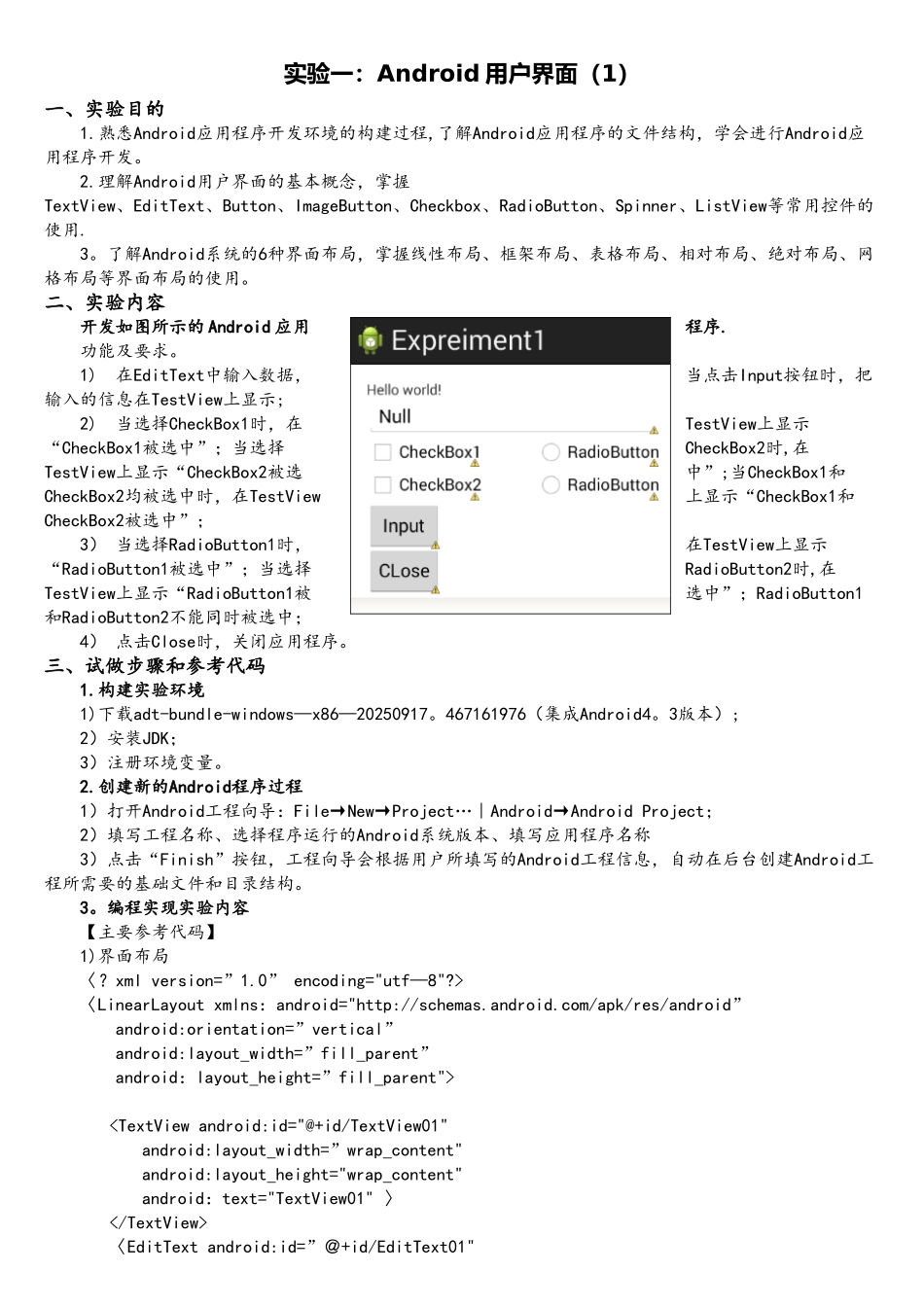实验一:Android 用户界面(1)一、实验目的1.熟悉Android应用程序开发环境的构建过程,了解Android应用程序的文件结构,学会进行Android应用程序开发。2.理解Android用户界面的基本概念,掌握TextView、EditText、Button、ImageButton、Checkbox、RadioButton、Spinner、ListView等常用控件的使用.3。了解Android系统的6种界面布局,掌握线性布局、框架布局、表格布局、相对布局、绝对布局、网格布局等界面布局的使用。二、实验内容开发如图所示的 Android 应用程序.功能及要求。1) 在EditText中输入数据,当点击Input按钮时,把输入的信息在TestView上显示;2) 当选择CheckBox1时,在TestView上显示“CheckBox1被选中”;当选择CheckBox2时,在TestView上显示“CheckBox2被选中”;当CheckBox1和CheckBox2均被选中时,在TestView上显示“CheckBox1和CheckBox2被选中”;3) 当选择RadioButton1时,在TestView上显示“RadioButton1被选中”;当选择RadioButton2时,在TestView上显示“RadioButton1被选中”;RadioButton1和RadioButton2不能同时被选中;4) 点击Close时,关闭应用程序。三、试做步骤和参考代码1.构建实验环境1)下载adt-bundle-windows—x86—20250917。467161976(集成Android4。3版本);2)安装JDK;3)注册环境变量。2.创建新的Android程序过程1)打开Android工程向导:File→New→Project…︱Android→Android Project;2)填写工程名称、选择程序运行的Android系统版本、填写应用程序名称3)点击“Finish”按钮,工程向导会根据用户所填写的Android工程信息,自动在后台创建Android工程所需要的基础文件和目录结构。3。编程实现实验内容【主要参考代码】1)界面布局〈?xml version=”1.0” encoding="utf—8"?>〈LinearLayout xmlns:android="http://schemas.android.com/apk/res/android” android:orientation=”vertical” android:layout_width=”fill_parent” android:layout_height=”fill_parent">〈EditText android:id=”@+id/EditText01" android:layout_width=”fill_parent" android:layout_height="wrap_content”android:text=”Null" 〉


